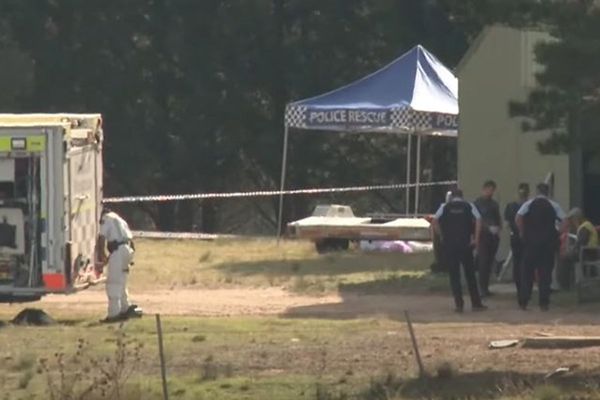
Golf on the mainland is here.
After the PGA Tour’s opening two weeks in Hawaii, next up is the American Express at PGA West in the California desert.
The Palm Springs event has been a staple on the Tour’s calendar since 1960, boasting some lasting moments. In its 65th year, a strong field will be vying for a part of the $8.5 million purse, with the winner collecting $1.53 million and 500 FedExCup points.
From its field, courses and history, here’s what you need to know for the 2025 American Express.
The field
Scottie Scheffler and Xander Schauffele may have withdrawn, but the 156-player field still features some notable names.
Wyndham Clark is the only top-10 player competing in Palm Springs, but nine of the world’s top 30 are teeing it up. Some of those names include Patrick Cantlay, Sungjae Im, Sam Burns, Justin Thomas Tom Kim and Tony Finau. In total, the field boasts 20 of the world’s top 50 players.
Including last week’s Sony Open winner Nick Taylor, 12 players in this week’s field finished top 10 in Hawaii: Nico Echavarria (P2), J.J. Spaun (T3), Eric Cole (5th), Patrick Fishburn (T6), Adam Schenk (T6), Jackson Suber (T6), Nick Dunlap (T10), Harry Hall (T10), Paul Peterson (T10), Lee Hodges (T10) and Jesper Svensson (T10).
Twenty-six of 32 Tour rookies will compete in Palm Springs, with a chance to play their way into the AT&T Pebble Beach Pro-Am and Genesis Invitational.
The field also features six former American Express winners: Charley Hoffman (2007), Bill Haas (2010, 2015), Jhonattan Vegas (2011), Jason Dufner (2016), Si Woo Kim (2021) and Dunlap, who last year became the first amateur since Phil Mickelson in 1991 to win on Tour.
The 21-year-old Dunlap, now a two-time Tour winner, is looking to become the second-youngest player to successfully defend a Tour victory title since 1900 (John McDermott did it in the 1912 U.S. Open at 20 years old).
Blades Brown, 17, will be making his professional debut and second Tour start on a sponsor’s exemption. In 2023, he was the youngest co-medalist in U.S. Amateur history, besting a record set 103 years ago by 18-year-old Bobby Jones in 1920. Read more about Brown here.
The course(s)
The American Express is contested on three courses: the Pete Dye Stadium Course, La Quinta Country Club and the Nicklaus Tournament Course—all par-72s.
Players will tee it up on each course during the first three rounds, with a cut of the top 65 and ties following the third round. The final round will be contested on the Stadium Course.
The Stadium Course is the longest of the trio, playing at 7,210 yards. La Quinta is 7,147 yards and the Tournament Course lays out at 7,060 yards.
Last season, La Quinta was the second easiest course on Tour (49th out of 50) based on scoring average, playing more than four strokes under par at 67.903. The event’s other two courses weren't much harder, though. The Tournament Course was 48th on Tour in terms of difficulty and the Stadium Course, which will feature new greens this year, was 47th. The Tournament Course’s scoring average last year was 68.084 and the Stadium Course’s was 69.148.
The Stadium Course is also home to the “monster bunker”—a left greenside trap on the par-5 16th that’s 18 feet below the green, making it the Tour’s deepest bunker.
“Whatever they call that bunker, it’s, I was kind of in the middle of it and it was very firm,” Harry Higgs said after hitting into it in 2022. “My feet, it felt like concrete. And then you’re kind of picking between two evils, right? Do I bounce into it, send it screaming over the green, or do I take a shot on and it just doesn’t clear, it’s going to roll back down? And then it rolled back down.”
This massive bunker @TheAmExGolf is 𝙣𝙤𝙩 for the faint of heart 😳 pic.twitter.com/MkS4v8D9AB
— PGA TOUR (@PGATOUR) January 18, 2023
History: Arnie’s last
The American Express claims several memorable moments in golf history, most notably, David Duval’s closing 59 (the third sub-60 round in Tour history) to win in 1999 and last year when Dunlap became the first amateur in 33 years to win on Tour.
However, it’ll always be home to Arnold Palmer’s last win.
In 1973, the 43-year-old entered the then-Bob Hope Desert Classic winless in the last 18 months. The King had won four Bob Hope’s, but it appeared his glory days were behind him.
Despite a star-studded field, the California desert was a place Palmer felt comfortable—and confident.
Entering a rainy final day of the five-round tournament (it was a 90-hole event until 2011), Palmer trailed Jack Nicklaus and a young Johnny Miller by a stroke. But with a birdie on the fourth hole, Palmer claimed a lead that he never relinquished. Arnie’s Army, out in full force, was in a frenzy.
The Latrobe, Pa., native had a two-stroke lead on the last. Nicklaus had a chance to make eagle, but his 20-foot try burned the edge of the cup, and Palmer rolled in a 7-footer for birdie to notch the victory.
In celebration, Palmer flung his visor, collecting $32,000 for his 62nd and final PGA Tour triumph.
“I’d be less than honest if I didn’t admit there were times I had doubts about ever winning again,” Palmer said afterward. “It’s always a necessity to win. If it isn’t, there isn’t any need to play.”
A hell of a day.
— PGA TOUR (@PGATOUR) January 18, 2017
Arnold Palmer's final win on the PGA TOUR. https://t.co/CRtCoRq38o pic.twitter.com/GN1D82RMVz
How to watch
All four rounds will be on Golf Channel from 4-7 p.m. ET. ESPN+ will also have featured coverage from 11:30 a.m. to 7:30 p.m.
Tee times, groupings for the first three rounds (PST)
Groupings and starting times for the first three rounds of The American Express pic.twitter.com/P2cgR9A4Gi
— PGA TOUR Communications (@PGATOURComms) January 13, 2025
This article was originally published on www.si.com as 2025 American Express Tee Times, History, Course Preview, How to Watch.







